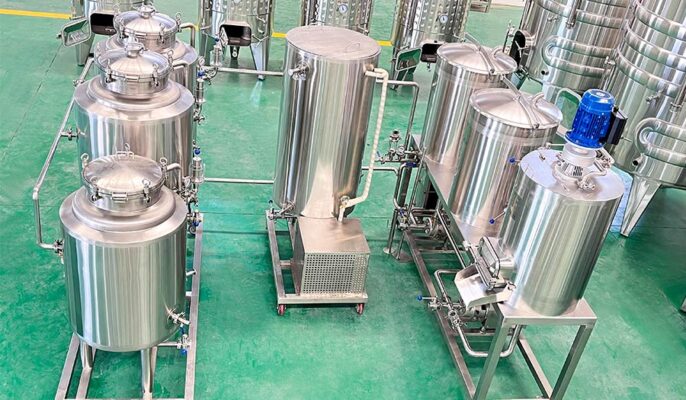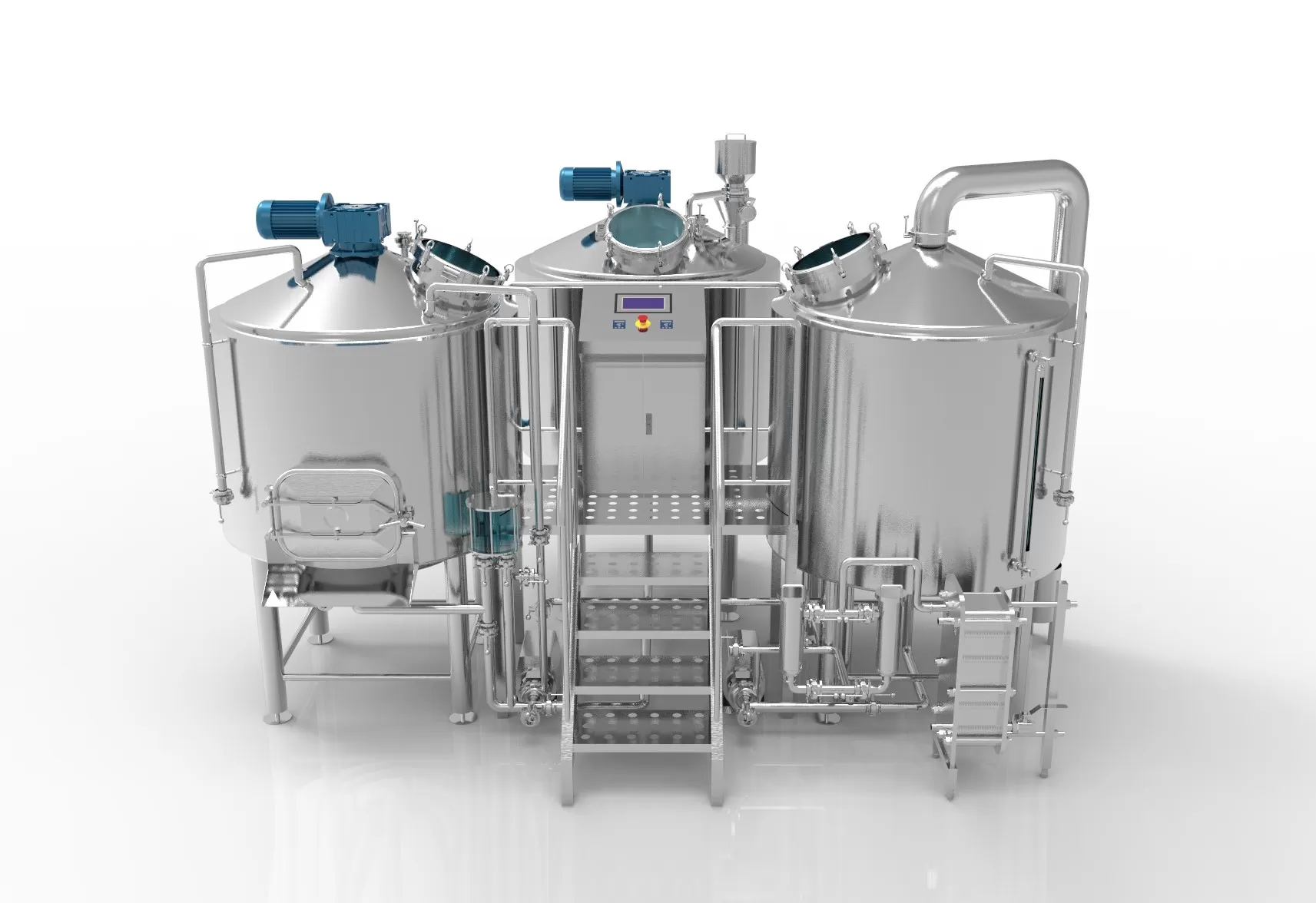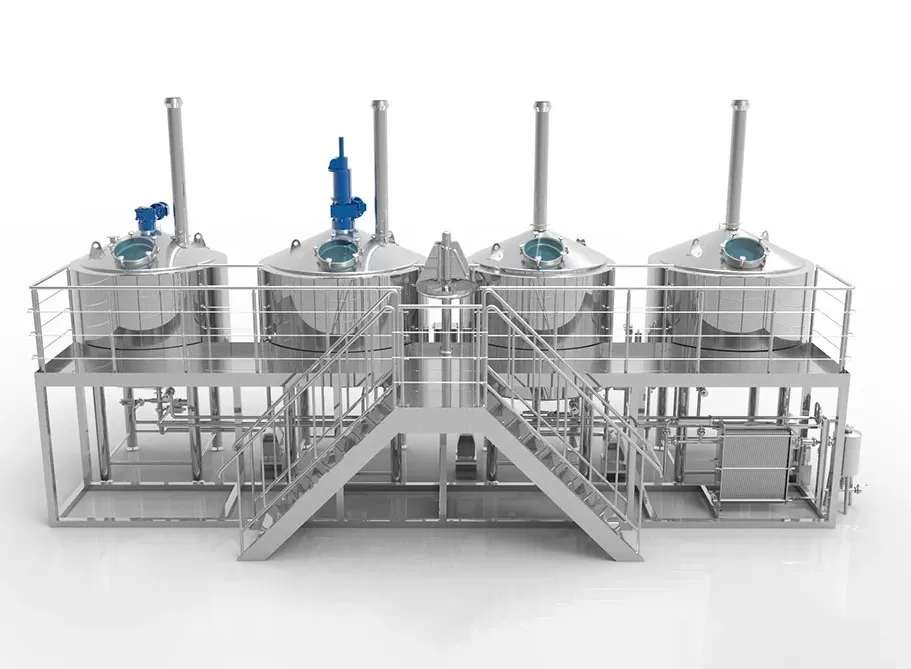Choosing home brewing equipment is the first step to starting home brewing. Homebrewing is a hobby that’s easy to try but more complex. The process of homebrewing not only gives you a great appreciation for beer but also a better understanding of brewing. Home brewing equipment doesn’t have to cost a lot to brew delicious beer. In this article, we’ll introduce you to some of the best beer brewing equipment kits for beginner home brewers.
What kind of home brewing kit?
Uitrusting voor bierbrouwen kits provide beginner homebrewers with an all-in-one package that contains the basic equipment needed to brew beer. They come in a variety of sizes and complexities to suit your needs. Home brewing kits take the guesswork out of purchasing and assembling individual equipment. Everything needed for the mashing, boiling, fermentation, and bottling processes will be included in one box. A beer brewing kit is a great way to get started with home brewing.
A fermentor is one of the primary tools in a starter beer brewing kit. It usually consists of a socket, a plug, and an airlock. A different option might be a food-grade bottling bucket.
Other tools even include mesh bags for soaking grains, thermometers, hydrometers, transfer tubes, bottling wands with shut-off valves, sturdy capping machines, capping bottle cleaning brushes, and disinfectants. These can serve as the basic tools for a good homebrew starter kit. All these instruments can propel you to the next step in becoming the winemaker of the century. They allow you to learn more and improve your winemaking skills. You can try new recipes, new ingredients, ingredient kits, and more.

Home Brewing Kit Features
Many brands offer different beer brewing kits. While each brand’s products have unique features, most share the same basic characteristics.
The first: is processing grains. These kits let owners handle the grain themselves; everything from scratch. Processing grains requires specific steps to extract the sugars from the grains.
Second: Skip the grains and go straight to malt extract. This method tends to be more expensive but is more suitable for beginners. You will receive malt extract already prepared.
Once you become more experienced, you may move on to a grain brewing kit. They give you more freedom to differentiate your product; the range of results you can achieve increases .
Advantages of Home Brewing Kit Equipment
Beer brewing equipment kits provide beginner homebrewers with an all-in-one package that contains the basic equipment needed to brew beer. They come in a variety of sizes and complexities, allowing you to choose according to your needs.
- Convenience – all devices are pre-selected and ready to go
- Cost Savings – Buying a complete set of tools is cheaper than buying items
- Simple – ready to use out of the box, easy to assemble
- Standardization – components are designed to fit and work together
- Scaling options – kit capacities from 1 gallon to 10+ gallons
Types of Home Brewing Kits
There are three main types of home brewing kits:
Basic kit
A basic kit contains the smallest amount of equipment you need to brew beer for the first time. They are designed for new brewers on a budget.
- Brew pot – usually about 5 gallons
- Fermentation barrel with lid
- Airlocks and plugs
- Bottling equipment – siphons, pipes, bottling rods
- Bottles, caps, and capping machines
- Cleaning and disinfecting supplies
- Basic brewing raw materials – malt extract, hops, yeast
Basic kits make it possible to start home brewing without a large upfront investment. The disadvantage is that it has poor advanced features and upgrade capabilities.

Intermediate kit
The intermediate package offers more features for winemakers who want to expand their skills. Extra equipment allows for better temperature control, greater efficiency, and more customization.
- Brew pot – approximately 10 gallons
- Stainless steel or enamel kettle
- Glass bottles for secondary fermentation
- Improve temperature control capabilities
- Hydrometer for measuring ABV
- Large grain bag or muslin for soaking grains
- Bottle filling machine and automatic siphon filling machine
- Other brewing ingredients and additives
Mid-level kits offer greater flexibility in the brewing process while remaining affordable.
Premium Kit
The Advanced Kit is designed for experienced winemakers and is capable of simulating commercial-grade brewing equipment. They allow for whole-grain mashing, precise control, and most customization.
- RIMS or HERMS electric heating system
- Stainless steel mash tun for multi-step whole-grain mashing
- 15+ gallon kettle with ball valve
- Conical or Cornelius keg for pressurized fermentation
- Advanced temperature controller and pump
- High-end bottles, capping machines, scales and accessories
- Complete ingredient kit for whole grain batches
The advanced kit provides homebrewers with professional-grade features for custom brewing. They need a larger investment but open up endless possibilities.
The basic components of a home brewing kit
Brouwketel
- Material – Stainless steel and aluminum are the best
- Capacity – Aim for at least 5 gallons, 10 gallons is better
- Accessories – Ball valve for easy drainage
- Thermometer – an essential tool to reach the mash temperature
Vergister
- Food-grade plastic bucket or glass/stainless steel large bottle
- Wide opening for easy cleaning and adding ingredients
- Sealing cover with air lock device
Temperatuurregeling
- Insulated wort barrel – maintain the required temperature
- Wort cooler – cools boiled wort
- Heating element – for whole grain mashing (RIMS/HERMS)
- Thermometer – measure and watch temperature
Reinigen en desinfecteren
- Cleaner and disinfectant chemicals
- Bottlebrush, glass bottle brush
- Rinse-free disinfectant (Starsan)
- Cleaning pads, rags, spray bottles
Bottling and kegging
- Bottling bucket with faucet – bottling is easier
- Automatic siphoning and piping – no need to start siphoning
- Bottling stick – reduces foaming
- Kroonkurken en sluitmachines
- Keg, regulator, tap – for home-made draft beer
Ingredients kit
- Malt extract, grains, and hops
- Yeast strains – ale, beer, wine, etc.
- Trigger sugar, clarifying agent, nutrients
- Recipes for different beer styles
Other Accessories
- Hydrometer – measures alcohol by volume
- Large filter bag – for soaking grains
- Wort aerator – adds oxygen to the yeast
- Brewing spoon, stir stick, stirrer
- This covers the key components that differentiate a high-quality beer brewing kit from lower-end versions. Focus on kettles, fermenters, and temperature controls when evaluating options.
Common Home Brewing Equipment Kit Dimensions
- 1 Gallon Kit
- Production: 1-gallon bottled beer
- Mash barrel: 1.5-2 gallon capacity
- Kettle: 2+ gallon capacity
- Fermentation tank: 1-gallon tank
Advantages: low cost, easy to manage, suitable for beginners
Disadvantages: Time-consuming to process large batches, limits advanced technology
5-gallon set
- Production: Approximately 2 cases of 12 oz bottled beer
- Wort barrel: capacity 5-10 gallons
- Kettle: 5-10 gallon capacity
- Fermentation tank: 5-6.5 gallon bucket or large bottle
Pros: Provides ample supply for personal drinking
Cons: Batch size limits some whole-grain techniques
10 Gallon Kit
- Production: 4-5 cases of 12 oz bottled beer
- Mash tun: 10+ gallon capacity
- Kettle: Capacity 10-15 gallons
- Fermentation tank: 6.5-14 gallon bucket or large bottle
Pros: More efficient, and more flexible with all-grain brewing
Disadvantages: Requires more space and labor
How to choose the size of your beer brewing equipment kit?
- Type of Beer: The type of beer you want to brew is an important consideration when choosing a kit. Some kits are designed to produce specific types of beer, while others offer greater flexibility. Take some time to think about what kind of beer you want to brew and choose a kit that meets your goals.
- Ease of use: As a new home brewer, it is important to choose a kit that is easy to use. Look for a kit that comes with clear, step-by-step instructions and doesn’t need a lot of technical knowledge or skills. By choosing a kit, you can focus on the fun of brewing beer instead of getting bogged down in the details.
- Equipment included: Another important consideration is the equipment included in the kit. Look for a kit that includes all the equipment you need to get started, such as fermentation vessels, bottling equipment, and a hydrometer. You should also consider whether the kit includes ingredients like hops and yeast, or if they need to be purchased .
- Cost: The cost of beer brewing kits varies . Some kits are affordable, while others are more expensive. Think about how much you’re willing to spend and look for a kit that fits your budget.
Beer Brewing Tips for Beginners
- It is important to read the instructions . Every kit is different, so it’s important to follow kit-specific instructions. This will ensure you have a successful brewing experience.
- Sterilization is the key to brewing high-quality beer. Be sure to sanitize all equipment before you begin. This will help prevent contamination and ensure your beer is of high quality.
- Too to sanitizing equipment, it is also important to keep the brewing area clean. A clean brewing area helps prevent contamination and ensures the quality of your beer. Make sure to clean the brewing area before and after each use.
- When brewing with the kit, it is very important to follow the recipe. This includes the type and amount of ingredients, as well as brewing time and temperature. Following the recipe will ensure your beer performs as expected.
- Brewing beer takes time, so be patient. Follow the instructions to give your beer enough time to ferment and condition . Rushing the process can result in poor-quality beer.




